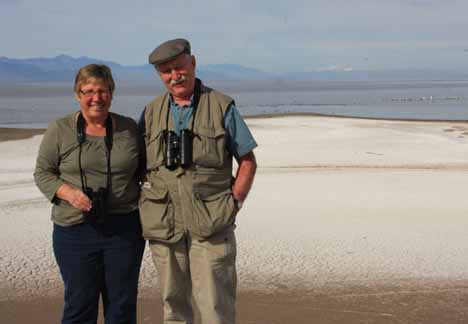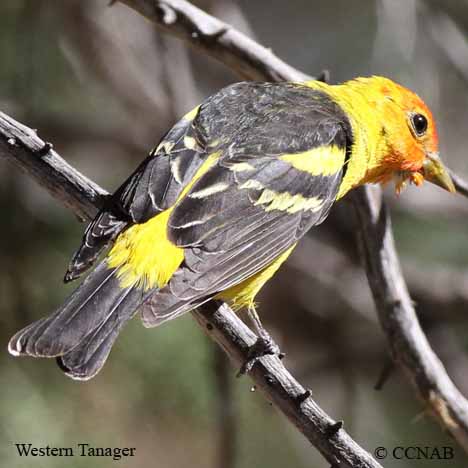Field Guide for all the Birds of North America
Site Build It! reviews
Information, images and range maps on over 1,000 birds of North America, including sub-species, vagrants, introduced birds and possibilities
Enter Bird's Name in Search Box:
Hello,
I came across Site Build It approximately 10 years ago.
I am an outdoor enthusiast, as is my wife. We began photographing birds when the new age of digital cameras caught up to
film cameras.

We recognized many advantages this modern age of photography had over its predecessors. After a few years of photographing, we knew there had to be more than just saving the images on hard drives. It was at this point that we started to consider building a website so that we could share our images with others who might have the same interest or need help in identifying birds.
It was my wife, Lise, who first discovered Site Build It, "https://www.sitesell.com" (home page) in the fall course calendar of Algonquin College
College in Ottawa, Ontario, listing night courses. One course of particular interest was how to create your own website. Even after
joining the Site Build It night course, I had no real idea of what it entailed.
 I do admit that during the first few weeks, there was a substantial learning curve to be met. SBI had a three member teaching team. All were
quite helpful, all had already developed their own sites and were achieving the results they were searching for. Kirby, in particular,
had a natural way of presenting the course material, allowing the students to understand and build their sites, one idea at a time. Students
need instructors like Kirby to give them confidence and create enthusiasm, which leads to positive website-building experiences.
I do admit that during the first few weeks, there was a substantial learning curve to be met. SBI had a three member teaching team. All were
quite helpful, all had already developed their own sites and were achieving the results they were searching for. Kirby, in particular,
had a natural way of presenting the course material, allowing the students to understand and build their sites, one idea at a time. Students
need instructors like Kirby to give them confidence and create enthusiasm, which leads to positive website-building experiences.
Even before I was finished my SBI evening course, Google had found my site. This was such a thrill for me! One of the tools
supplied by "https:///tools.sitesell.com", came with the one-year membership and I received a count at the start of each day indicating how many
visitors I had the day before. My site, "www.birds-of-north-america.net", started showing ten visitors the first few days, soon followed by
twenty, sixty, one hundred, one thousand, two thousand, four thousand, six thousand and as high as eight thousand and more visitors per day
during the bird migration periods.
 I now have as many as 5,000 keywords, that puts Classic Collection of North American Birds (CCNAB for short), on the 1st page of
Google, using targeted keywords. In building this site, I relied on the written and taught materials provided by SBI staff (which were very
helpful), Site Build It chat forums and even an online SBI staffer willing to aid a Site Build It user from time to time at
no extra charge.
I now have as many as 5,000 keywords, that puts Classic Collection of North American Birds (CCNAB for short), on the 1st page of
Google, using targeted keywords. In building this site, I relied on the written and taught materials provided by SBI staff (which were very
helpful), Site Build It chat forums and even an online SBI staffer willing to aid a Site Build It user from time to time at
no extra charge.
Today, after 10 or more committed years, CCNAB is in the top 1% of all websites in the world. This was achieved by believing in SBI and not getting distracted by other competitive sites, such as the Wealthy Affiliate, who is represented with articles on the web describing SBI as too "difficult" to understand, too much info to intake and offering an easier and cheaper method of achieving a successful website. There is no easy way. Site Build It has been a very successful vehicle for CCNAB. If not for SBI, I would not have one of the top website, representing the birds of North America in the world, as well as competing against already established websites as Cornell University, Audubon Society and so many others.
I would like to point out that I am not being paid to write this review. I am doing so because of the mutual respect I have for SBI and the SBI staff. For other reviews, please go to "https://www.sitesell.com/sbi-reviews.html" to read about the success of other SBI users, users who are just as willing as myself to share their stories unlike the reviews of SBI competitors, who pay writers with the objective of turning potential members away from Site Build It.
References to Other Bird Sites:
These are links to websites pertaining to the different birding institutions, societies and organizations here in North America. Some of these same sites are a great asset to seeking out knowledge on birds in other regions of the world. Each of these links offer the user different methods to identify birds, whether it be by regions, habitat, appearance or maybe colour. Knowledge on the possibilities of where and what birds might be present are included.
Avibase - the world bird database This site provides the user with a complete list of bird species, broken down per country, or in the example of the US or Canada, per state and province. Here, bird species names are available in other languages, a great asset to be used as a translation of foreign bird names.
ABA - American Birding Association This site represents an organization that maintains official records of all birds species that have been proven to have been seen inside the perimeters of the North American Continent and the surrounding bodies of water. Regular revised versions are posted to keep the bird list current at all times. This is the list used by all serious birders over their lifetime. You may be aware of the movie called the "Big Year". It was with this list that all the competing birders used in an attempt to set a new record as to how many bird species that could be seen by an individual birder in one calendar year.
The description to follow is taken from the AOS Home Page.
AOS - The American Ornitholgy Society is an international society devoted to advancing the scientific understanding of birds, enriching ornithology as a profession, and promoting a rigorous scientific basis for the conservation of birds. As one of the world's oldest and largest ornithological societies, AOS produces scientific publications of the highest quality, hosts intellectually engaging and professionally vital meetings, serves ornithologists at every career stage, pursues a global perspective, and informs public policy on all issues important to ornithology and ornithological collections. AOS is distinguished by its tremendous collective expertise, including eminent scientists, conservation practitioners, early career innovators, and students.
ABC - American Bird Conservancy This is an organization started in Europe and is now formed in North America in the 1990's. It bases its goal on four approaches, Halt extinctions, Protect habitat, Eliminate threats and to Build capacity. One of their ways of achieving these goals, is by purchasing and leasing lands around already protected lands and creating larger safe zones for all its habitants.
eBird - TheCornellLab of Ornithology eBird is a must for any individual, who has an interest in birds. This site allows users to sign up and participate in recording birds seen on a daily basis as well as the location, for any bird species seen in the world. In addition, users can use the existing data to search out the location of bird species throughout the year. By using filters, information as to the movements can be determined. Photos can be added to identify individual birds. Migration pattern can be calculated using information by months or years as needed. Range maps can be verified, allowing the users to see where the presence of individual bird species are expected to be at certain times of the year.
NA - National Geographic The Society of National Geographic provides some of the best books available for those who have an interest in birds. The book called "The Complete Birds of North America", is a book recommended to be part of any birders library. This book covers all the native and vagrant species of birds seen on the North American Continent. It provides information on all the birds listed on the ABA bird list. This book goes into great details, describing the individual species and their races. That aside, their website provides wonderful information pertaining to many articles regarding nature.
NAC - National Audubon Society The National Audubon Society is the oldest organization in North America. It was initially formed for the preservation of egrets and herons as well as waders, who were being hunted and killed, so their feathers could be used in the clothing industry. Today, there are many chapters of the NAS all over the continent and all individual groups have a common goal, to educate the public. In doing so, creating awareness of the birds and their plights. They were the driving force in promoting the original international laws, protecting migratory birds. Today, their website has made information available on articles, images and sounds, relating to all the native birds seen in North America.
I hope you will take advantage of these suggested websites. I have used each of them, in one way or another, throughout the years in my quest to better identify and understand our fine feathered friends.